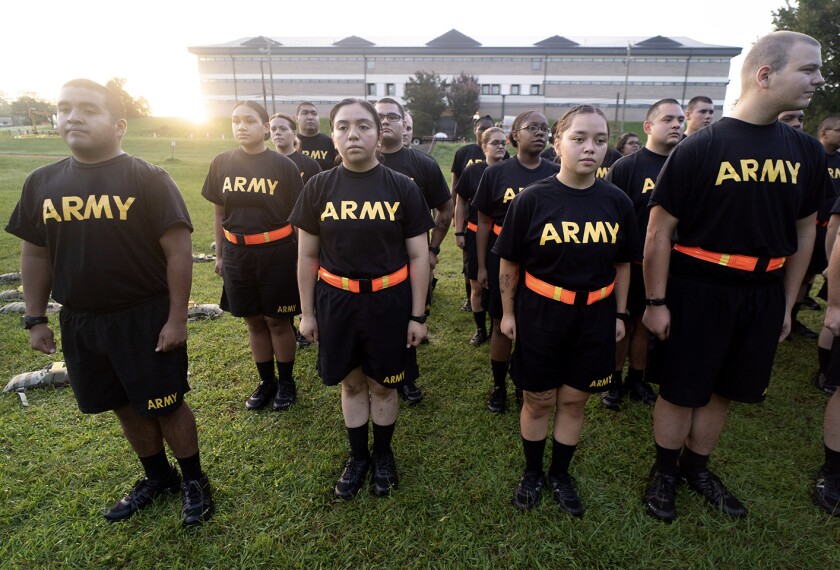It may be a slow time for K-12 activity on Capitol Hill, but you can’t say the same about higher education: In the last several weeks, both Democrats and Republicans have introduced bills designed to address college access, costs, and other policies.
On the GOP side, Sen. Lamar Alexander, R-Tenn., the chairman of the Senate education committee, has taken the lead on a package of bills dealing with the Free Application for Federal Student Aid, as well as short-term Pell Grants and other issues.
Meanwhile, House Democrats have unveiled the College Affordability Act, which builds on past legislation and aims to increase Pell Grant awards, lower student-loan payments, and more.
Both proposals would amend the Higher Education Act, which was last reauthorized in 2008 and is overdue for reauthorization. But it will be difficult for major revisions to the higher education law to pass Congress, especially given the House impeachment inquiry. Here are highlights of some important aspects of the proposals.
In addition to making the federal Public Service Loan Forgiveness program accessible to a broader pool of potential applications, the House’s College Affordability Act “reduces the number of payments required for teachers to receive loan forgiveness,” according to a fact sheet accompanying the bill. (That’s accomplished through allowing repayments to the Stafford Student Loan Forgiveness Program for teachers to count simultaneously for repayments to the PSLF program.)
Public service loan forgiveness has become a particularly controversial issue in the last few years, after complaints that the program was rigid and hard to interpret, leaving many teachers who expected to have their loans forgiven out in the cold.
The legislation would also increase TEACH Grant awards—available to students who agree to become teachers in certain subjects for a set time period—from $4,000 to $8,000, among other changes to that program. It would also protect against recent “inadvertent” conversions of these grants into loans.
Expanding Pell Grants
For high school students bound for colleges and universities, the Alexander-backed Student Aid Improvement Act would expand Pell Grant eligibility to 250,000 new students. It also would make an additional 1.3 million students eligible for the maximum Pell Grant awards, which under the senator’s bill would increase by $1,080 over the most recently appropriated limit before the bill’s passage. (The current maximum Pell award is $6,195 for 2019-20.)
Alexander’s legislation would also extend short-term Pell Grants to certain programs such as vocational education, a controversial idea because some have questioned the quality of the educational programs that could benefit from the grants. Democrats’ bills would index Pell Grants to inflation, which they estimate would result in a maximum award of $8,305 for fiscal 2029.
The House Democrats’ legislation would reauthorize Teacher Quality Partnerships; among other changes included in that reauthorization, Democrats point to the fact that under the bill, colleges and universities could join states in applying for TQP grants to work with school districts. The bill would also allow TQP funds to create new pipelines for principals.
In addition, the College Affordability Act would establish a funding stream for Historically Black Colleges and Universities and Minority Serving Institutions for programs to help recruit and retain a diverse teacher workforce. Alexander’s legislative package has its own provision to establish $255 million in annual mandatory aid to HBCUs and MSIs, although Democrats have objected to the idea because it’s tied to Alexander’s other higher education bills.
The proposals from both Alexander and from the House Democrats aim to “simplify” the FAFSA process. In fact, both would do so in part by reducing the number of questions. The Senate proposal from Alexander and Sen. Doug Jones, D-Ala., for example, would cut the number of FAFSA questions from 108 to a minimum of 17 and a maximum of 30. And the College Affordability Act would place students into one of three FAFSA “pathways” based on their financial backgrounds in order to make the process easier.
The House and Senate proposals both include what lawmakers say will make it easier for students to understand different offers of financial aid.
Although Alexander likes to display a paper FAFSA form to show just how long it is, it’s not the typical experience for students to fill out that entire form. A mobile-friendly FAFSA app debuted last year, although there were accompanying glitches.
Several factors complicate the already difficult path forward on these proposals. Higher education is tangled up in national politics—for example, unlike proposals from some Democrats on the 2020 presidential campaign trail, the House bill doesn’t cancel all or a vast majority of student debt.
Still, Alexander, who will not seek reelection in 2020, is interested in getting at least some revisions to federal higher education law over the finish line before he retires. And he’s stressed that taken together, the proposals in his chamber have bipartisan support.





